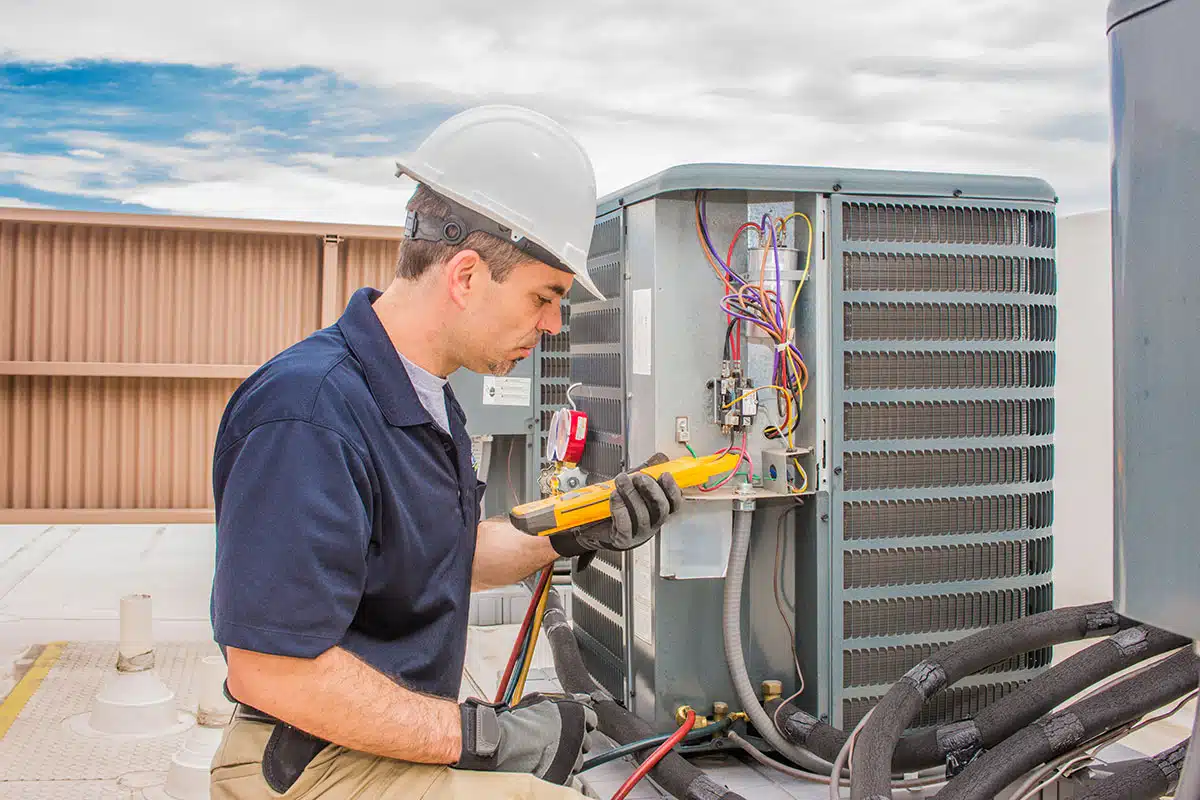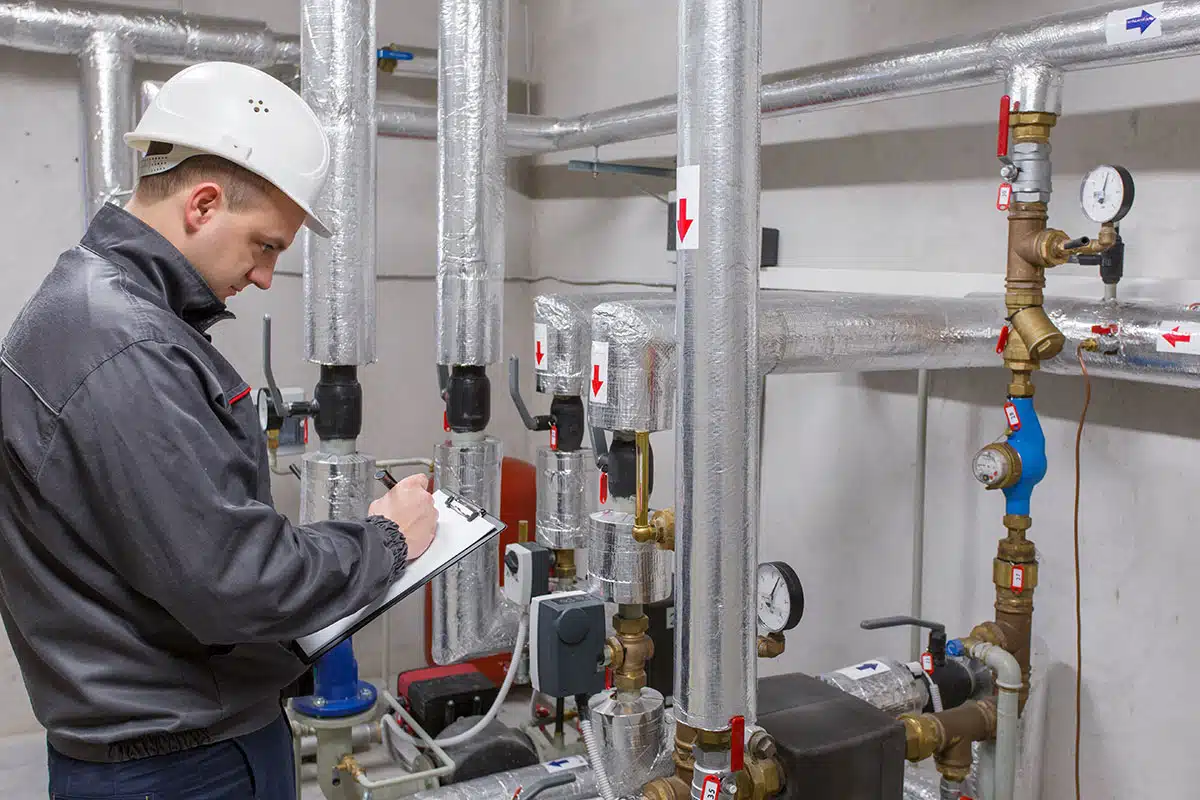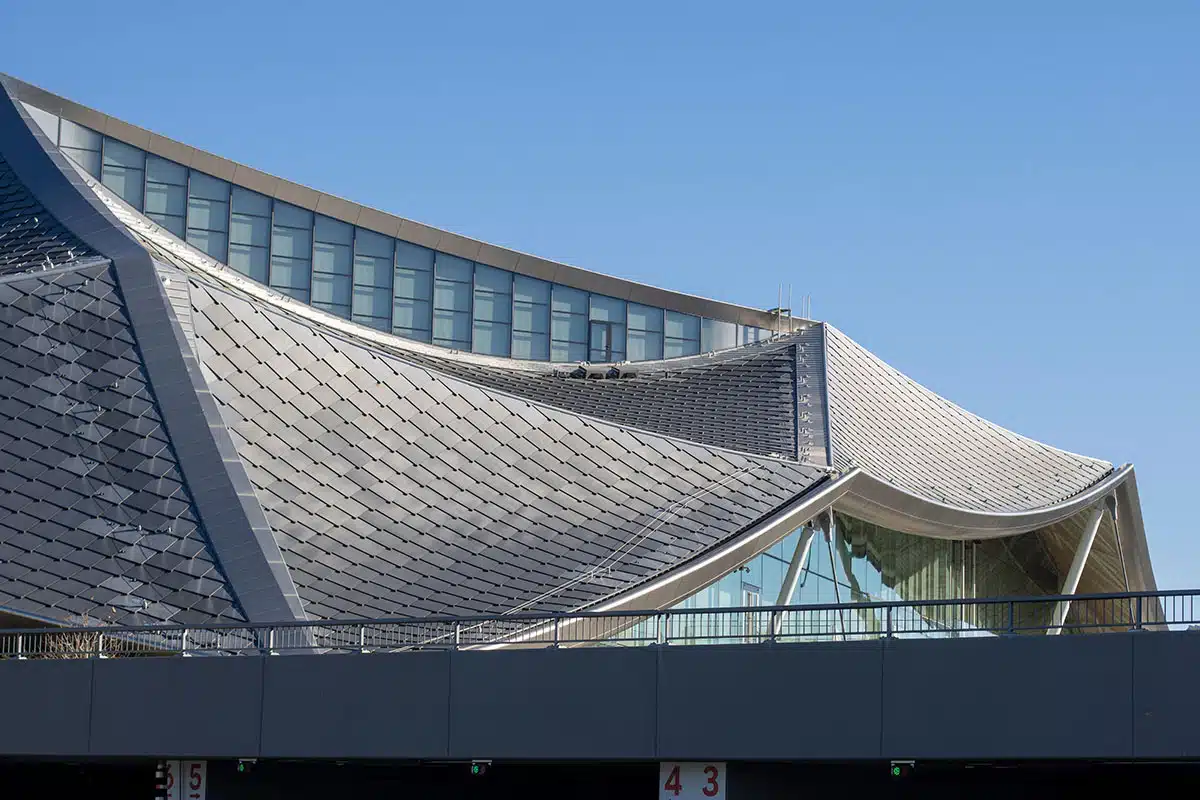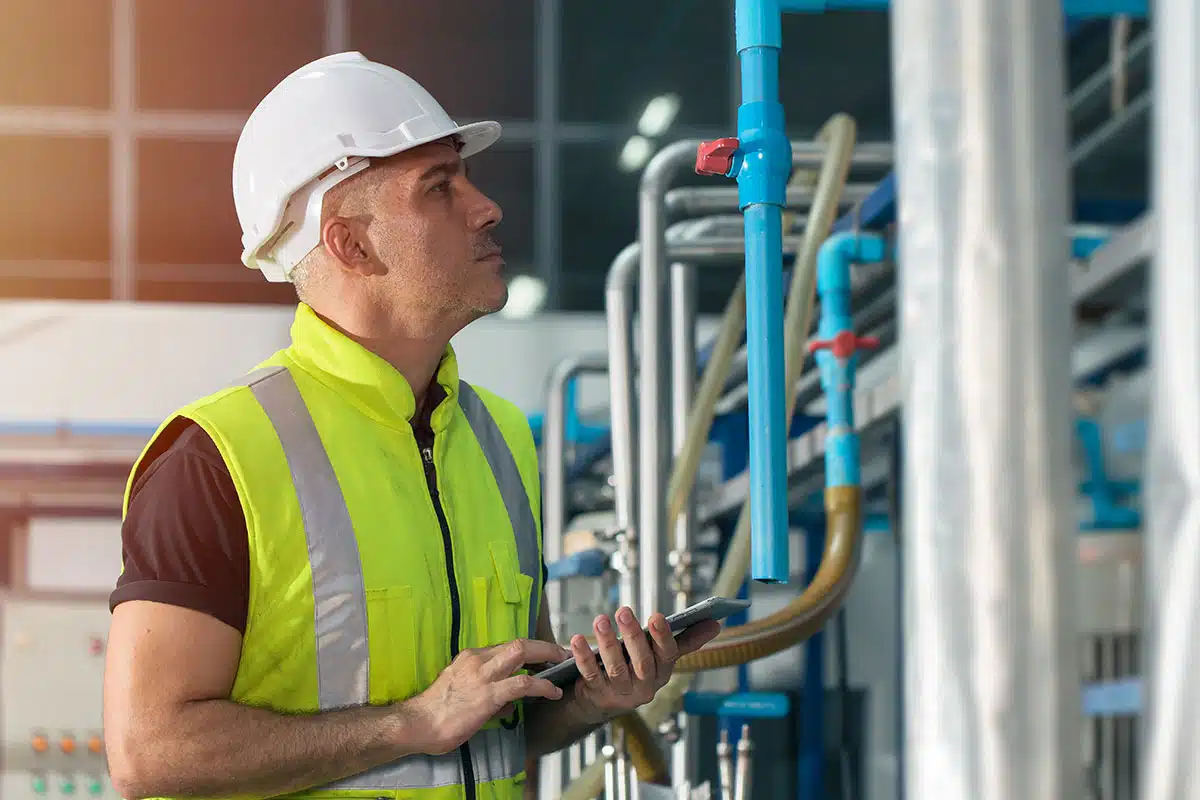Professional facility managers know that regular commercial building inspection is not optional but crucial to ensure facility occupants are safe and all building structures are sound.
Although inspections vary in scope across industries, BOMA (Building Owners and Managers Association International) recommends an annual “roof to floor” inspection for building envelopes, and OSHA suggests quarterly, monthly, or even weekly “self-inspections” for buildings, depending on the industry and potential facility hazards.
Whether you inspect once a year or once a quarter, tackle the entire facility in one go or break it up into sections, it can take a lot of labor hours and experienced personnel to carry out a thorough inspection.
The good news is that innovative, time-saving tools are becoming more accessible for inspection tasks, enabling efficient, informative, and reliable checks and monitoring.
Here are some of the tools being used for building inspections by facility managers looking to stay current and ensure that essential inspections for safety and building longevity can be conducted effectively.
Some companies are capitalizing on the fact that FAA rules don't apply to indoor drone use, and using these devices for interior inspections of industrial plants, greenhouses, warehouses, and other buildings.
Thermal Imaging Inspections
Thermal imaging is a non-invasive infrared (IR) technology that has been around for decades, but now sophisticated handheld devices are readily available to assist facility technicians and maintenance workers in inspecting and troubleshooting building assets.
The technology works by picking up differences in temperature with the use of mid- or long-range IR waves and creating a visual heat map of the object it is pointed at. (This is different from IR imaging or night-vision cameras that use short-range infrared waves.) By measuring temperature variations, and showing results on the monitor, thermal imaging devices identify hot spots that can indicate overheating components, or cooler areas that may signal energy loss or water intrusion.
With handheld thermal imaging tools, technicians can simply point the device toward an asset—such as an HVAC system—to identify potential overheating. Directed at a building’s doorways, windows, or refrigeration entrances, the imaging tools can reveal insulation weak spots. Thermal imaging can even produce results in poorly lit areas, making it ideal for building diagnostics and commercial building inspection.
What are the Advantages and Disadvantages?
Speed -Thermal imaging is a great timesaving tool that can quickly identify problems not visible to the human eye.
Convenience – The technology can be used without operation disruptions and does not need direct contact with the asset, creating safer conditions around electrical inspections.
Humans Needed – On the downside, it’s important to remember that it is only a tool, and still requires expertise from engineers or trained professionals for the best results.
Beyond handheld devices, thermal imaging can be even more effective when combined with another technology that’s rapidly gaining interest in commercial building inspection—aerial drones.
Commercial Building Inspection from the Top Down
Love them or hate them, drones—also known as unmanned aircraft systems (UAS)—are becoming increasingly useful as tools for commercial building inspection, due to their ability to access upper floors, rooftops, and other hard-to-reach places.
Now, the integration of AI software has resulted in smarter drones with expanded data collection and analytic capabilities. These newer drones can also handle larger payloads, enabling them to carry more equipment. And they can be equipped with thermal imaging systems, 4K aerial cameras, sensors such as LiDAR (Light Detection and Ranging, for use in surveying), and even robotic claws.
These capabilities are changing the nature of commercial building inspection. Equipped with thermal imaging, a drone can quickly scan a building’s facade and get up close to a suspected leak, for example, and take a picture at the optimal angle to provide a clear and unobstructed view of the problem area—something that is often difficult or hazardous for technicians to do from the ground, or even from a platform or window of the building.
Other tasks—such as conducting roof inspections to identify inadequate insulation, unwanted moisture, and structural damage—can all be done in minutes using drones. Areas such as parking lots and pools can be surveyed while simultaneously collecting and capturing data and images in real time.
But as with most technology, there are pros and cons.
What Are the Advantages and Disadvantages?
Safer – The power of accessibility that a drone brings to inspections eliminates many safety hazards. It saves technicians from climbing on to roofs using ladders or platforms, for example. Even single-story buildings can have different roof slopes, angles, and surfaces that create a hazardous terrain for technicians using binoculars and a camera, making drones a useful tool even for smaller facilities.
Speedier – The speed at which a drone can access a site and deliver information saves time and money. Using a drone, capturing images and analyzing them can take as little as a day, compared to weeks with traditional, human-only visual inspections.
Smarter – Enhanced with AI image processing capabilities, drones can provide real-time monitoring, analyze safety risks, and offer insights that can aid decision-making in determining budget or resource allocation.
The drone space is constantly changing, and with that will come improvements, but there are a few downsides to consider.
Expense – Hobby drones may be inexpensive, but the type of drones needed for commercial building inspection are not in the same league and do not come cheap. Add to that the cost of operator training, and taking on a drone program may be outside of many facility budgets.
Privacy – Most drones are manufactured in China, which may raise concerns about data privacy—and for good reason. It’s estimated that 80 percent of the commercial drones sold in the U.S. are made by Chinese companies. And some of the largest of these companies have been funded by the Chinese government—meaning that sensitive data on U.S. infrastructure may be making its way to Beijing.
This threat is being taken seriously by the U.S. government. In February 2024, the American Security Drone Act was signed into law, banning the federal government from buying Chinese or other foreign-made drones. Some experts argue that the business community would be wise to do the same.
Regulations and Restrictions – Commercial drones are considered aircraft and fall under the jurisdiction of the FAA. This means that businesses using drones for commercial building inspection must hire trained pilots that hold an FAA license and commit to abiding by the FAA’s rules on drone use.
The use of drones indoors is an exception to the above rule, however, and some companies are capitalizing on this fact. Many businesses have found drones to be valuable tools for interior inspections in industrial plants, greenhouses, or warehouses. Drones can also aid in managing inventory, monitoring hazardous chemical areas, and even responding to medical emergencies.
But what if you want to use a drone for exterior inspections, and don’t want to hire a professional pilot? In that case, consider using a drone service to conduct inspections. Drones-as-a-Service (DaaS) providers offer turnkey services that include trained pilots, drones, ancillary equipment, and software to do the job you need. Of course, as with any service, be sure to thoroughly vet your DaaS provider, and be clear about liability and data privacy protections.
Indoors or outdoors, as a service or in-house, it’s worth bearing in mind that the lack of privacy and other regulations regarding the use of drones and AI leaves the door wide open for facility managers’ liability. So do your research, and proceed cautiously when using this technology for inspections.
Scoping Out Tight Spaces
While drones can fly into some difficult-to-reach spots, there are some spaces that are just too tight for even the smallest craft. In those cases, a different tool is needed.
Referred to as borescopes, endoscopes, video scopes or just “scopes,” these inspection devices, just like their medical cousins, are ideal for getting into narrow and difficult-to-access spaces. These devices have come a long way since the borescope was introduced in the 1960s, and are now an important tool in commercial building inspection.
A scope consists of a long, flexible probe or rod that has a lens at one end and attaches to a handheld device or monitor at the other. (Technically, an endoscope has a flexible tube attachment, whereas a borescope can have a rigid or flexible attachment.)
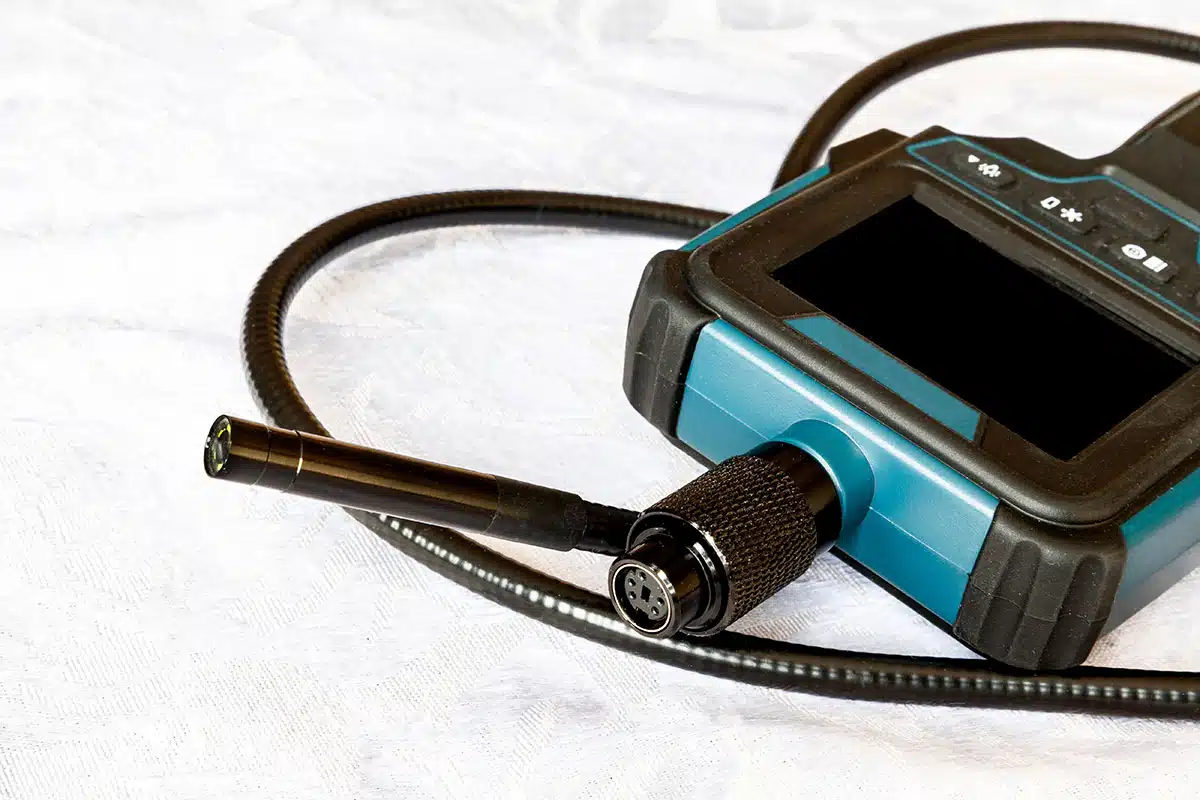
The attachment probe can be pushed inside small and compact spaces. Technicians can then steer and control the direction and angle of the probe, allowing the tool to maneuver through tight and complex spots. With adjustable LED lights for better vision in dark areas, together with miniature, high-definition (HD) cameras, detailed visuals of the interior space can be seen on the monitor, allowing for a comprehensive inspection.
What are the Advantages and Disadvantages?
Flexibility – The ability to get visuals inside a wall cavity or conduits, to assess integrity and wiring reliability, to inspect ductwork, or identify the origins of piping or electrical issues without having to dismantle or tear down walls make the scope invaluable as a non-destructive inspection tool.
AI Provides Consistency – As with other tools, AI is being integrated into the various inspection scopes. The aircraft industry is already using borescopes that utilize AI algorithms for automated defect detection and analysis. AI-powered software can detect anomalies, such as cracks or corrosion, enabling objective assessment and consistent evaluation.
Handle with Care
Borescopes can be prone to damage if handled incorrectly inside metal pipes or across rough surfaces, so it’s important to use the device cautiously in these situations. And as with any technical device, a scope provides the greatest advantage when in the hands of an experienced technician.
Robotic Ground Inspections
When the space being inspected doesn’t warrant a tiny scope but is still too small or hazardous for humans, there are inspection robots. Referred to as bots, rovers, or unmanned ground vehicles (UGVs) these tools offer a safer and more efficient option than manual inspection.
UGVs for commercial building inspection vary in type, function, and autonomy. For tasks such as inspecting HVAC ducts or entering crawl spaces under buildings, small 4-wheel drive or tracked (tank-like) vehicles (usually around 12–14 inches in length) are typically used for the job.
These rovers can be controlled remotely and run on batteries for several hours. They efficiently capture photos and video and are capable of zero degree turns—a big plus in tight spaces.
What Are the Advantages and Disadvantages?
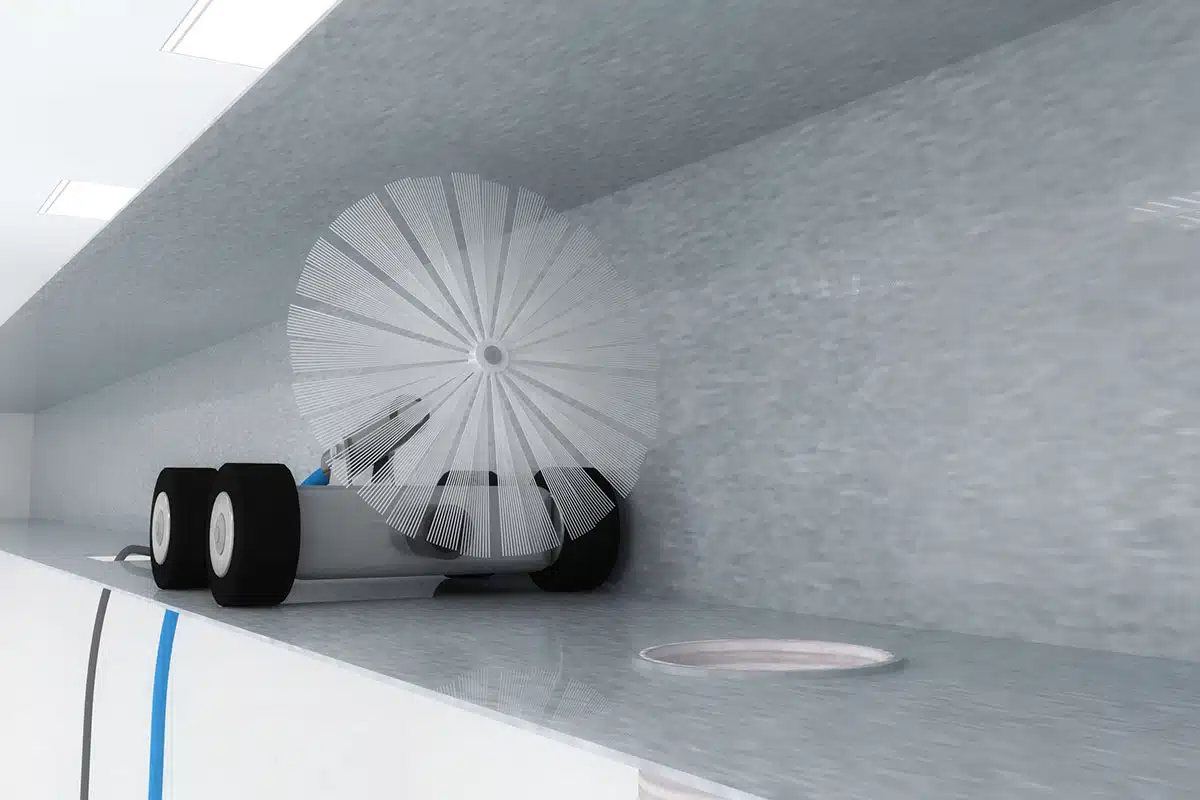
Efficiency – Rover robots can travel through HVAC ducts faster than a human worker. They don’t get tired and can continue working without getting distracted.
Safety – Rovers can be sent into hazardous areas (where there may be unstable construction or toxic chemicals) and either survey the area before workers enter or take photos of damaged structures and other risks.
Limited Tasks – Currently most robots are designed for a particular monitoring or inspection task; not all types of inspection can be performed by the same robot. But that may be changing. Researchers and manufacturers are aware of this issue, and are developing multi-ability learning robots that can turn their hands (or wheels) to many tasks.
